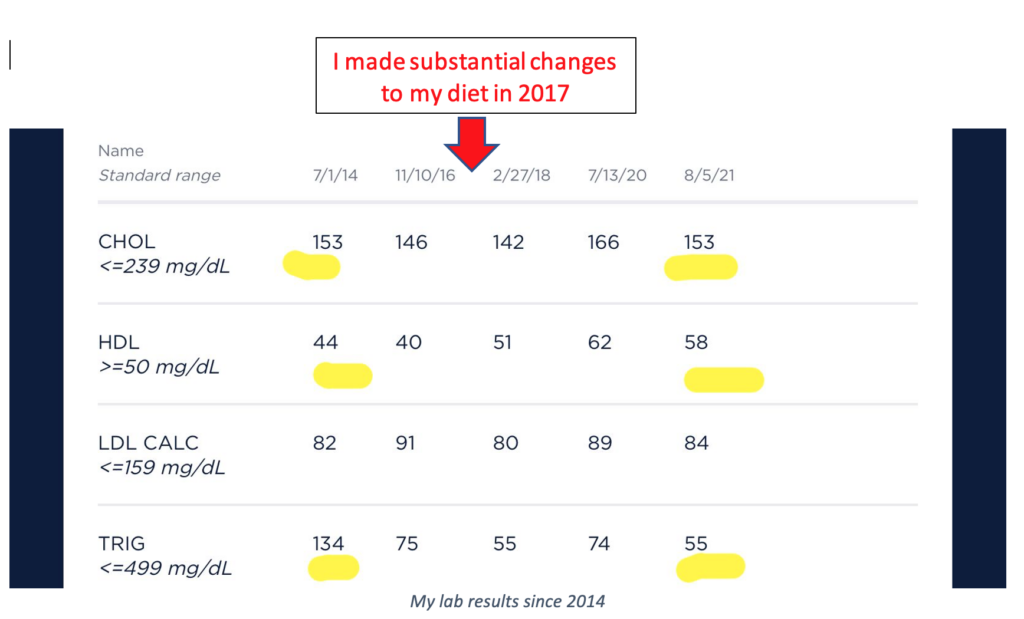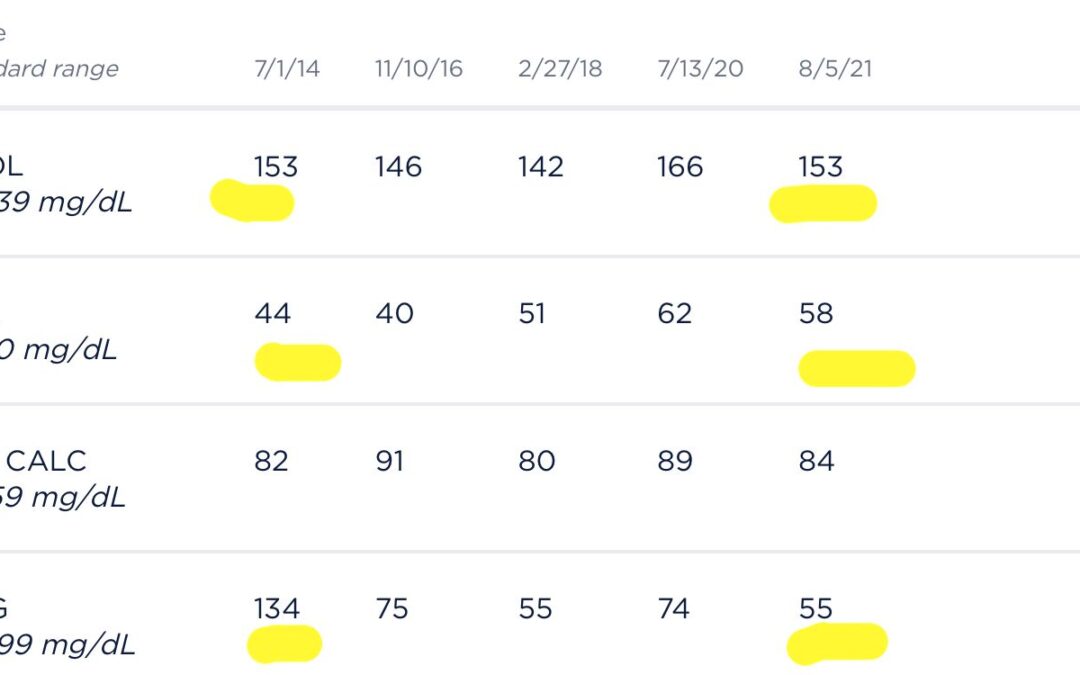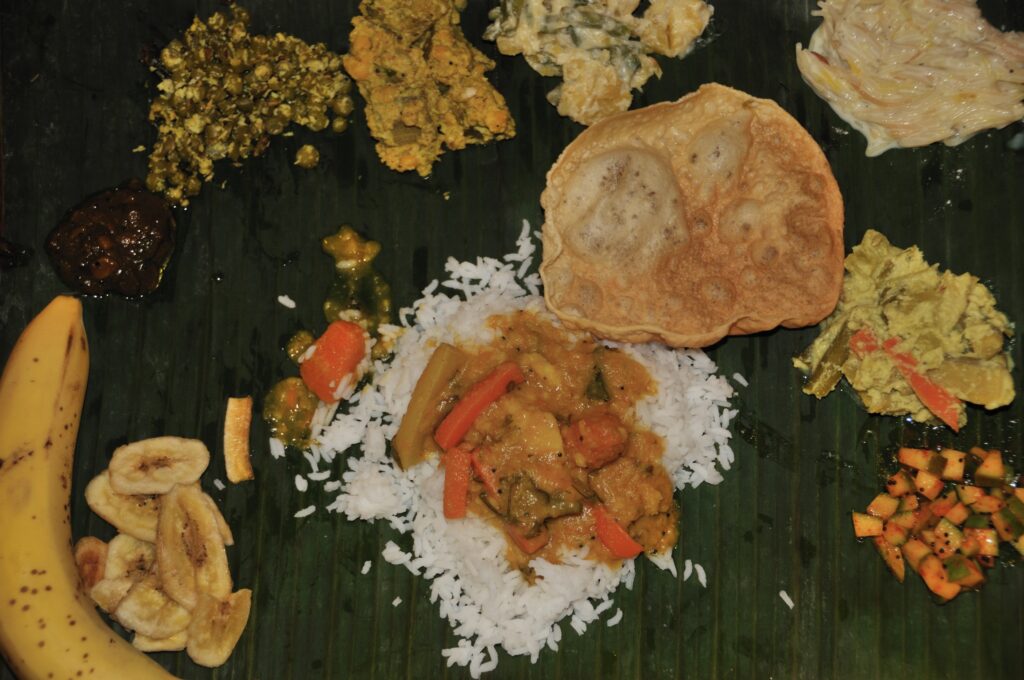During my infancy, my parents, who hailed from the south Indian state of Kerala, immigrated to the U.S. Thus, I grew up mostly eating traditional Keralan food at home. My mom (“Amma”). an excellent cook, pampered her family with her daily home cooked vegetarian dishes, based on the recipes passed down to her from her mother and sisters. Traditional “Malayalee” cuisine (Malayalam is the language spoken in Kerala) is largely based on rice and rice-based delicacies like dosa and idli (crepe and steamed cakes made from fermented rice/lentil batter). Malayalees also enjoy other starchy vegetables, fruits, and root tubers like tapioca, banana, plantains, jackfruit and mango, even potatoes to some degree.
I loved rice as a kid! I vividly recall eating at least 2 cupfuls of cooked white rice with meals at home, as this was the traditional main course to go with all the yummy vegetable dishes Amma made. Whether we were eating sambar, rasam, avial, or erissery, or a thoran, to list just a few of the delicious curries my mom regularly prepared for us, rice was the basis upon which everything else was served.
Traditional Malayalee style lunch (“sadya” style)
At the same time I was fed this amazing traditional diet from home, I was also growing up in the California Bay Area during the 1970s and 80s, when packaged, ultra-processed foods were just becoming the “rage”. I remember wanting to “be like my friends” who often brought flavored yogurts and sandwiches, cookies, crackers, and/or juice boxes in their lunch bags, even becoming a little ashamed to bring rice and curry for lunch, thinking that I would look less “cool” than my classmates. As most children of immigrants come to take for granted, my childhood became a finely balanced interplay of two cultures: my traditional Malayalee upbringing at home intertwined with the typical way of life of a kid growing up in American suburbia. All that might have been well and good, except for when it came to my diet. It would have been one thing had I grown up in India, eating the standard Malayalee fare, but when that largely starch-based cuisine got combined with the heavily sugar and starch-laden ultra processed Standard American Diet, it was a recipe for dangerous health outcomes, largely hidden though.
I recall making annual trips to see my primary care physician in my 20s and 30s. I always remember being told I was thin, healthy, and that my “cholesterol numbers” looked great. None of my doctors (I had several, as I moved from Pennsylvania to New Jersey, to Louisiana, and finally settled in California) ever expressed any concern, and kept telling me I was perfectly healthy.
Not until I began paying attention to the work of Dr. Lustig and my own sister (read my story for more details), did I come to learn that my diet actually contained way too much “free sugar” and relatively high amounts of refined starch! And only then, did I start analyzing my own lab results with a critical eye.

What surprised me was that even when I was “young and skinny”, my HDL never crossed the low 40s! As I now know, the “total cholesterol” doesn’t even matter, and the most important marker of my metabolic health was actually my “TG: HDL” ratio!
I decided to write this blog today because I’m sure there are others like me out there. Thinking we’re eating healthy, trying to balance busy lives as moms, wives, daughters, with or without our “full-time jobs” to boot. We visit our doctors regularly, trusting them to give us accurate information. So when we find out that decades of healthcare advice has been completely backward and probably led, in large part, to the current worldwide epidemic of obesity, we’re infuriated!
Thank goodness for doctors and researchers like Dr. Robert Lustig and Dr. David Ludwig who, questioning the status quo, are helping us think outside the box! Thank goodness for the Pediatric Resilience team for taking on the challenge to transform the way they approach care! Enough is enough, and let’s all start paying attention to the truth, which is essentially to go back to eating the way our grandparents did: eating mostly home-cooked meals, using wholesome ingredients, and no longer relying on the food industry to feed our families.
If we follow the basic principle of “J.E.R.F” (Just Eat Real Food, as my sister constantly implores!), we can and will be healthy. And then we can even indulge in our own homemade treats on special occasions! In fact, as I type this, my mouth is watering, nostalgically remembering one of my all-time favorites, eating the sweet appams my mom made for me as a child!


